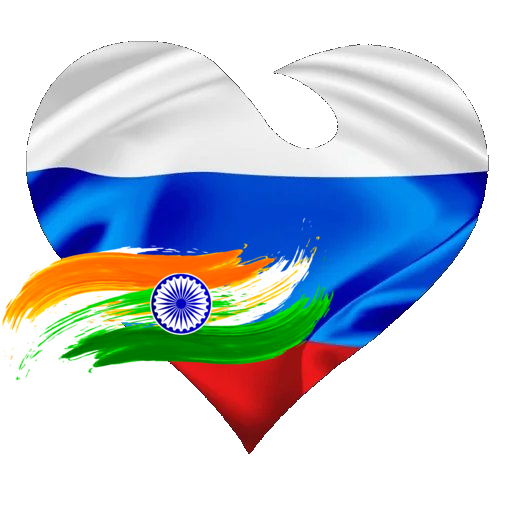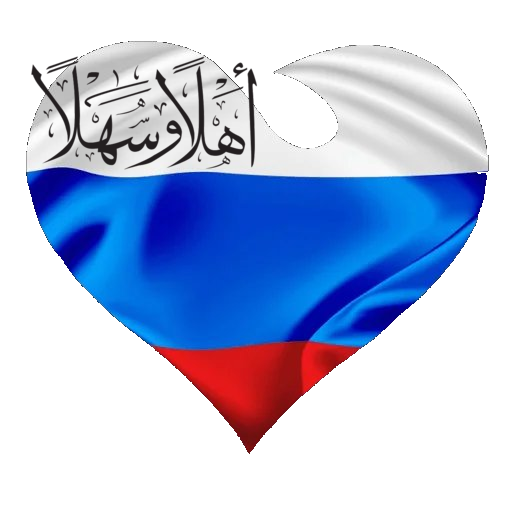Red Square is an old city square located on the side of the Kremlin walls in the historical territory of the city and has earned the fame of the main square of Moscow.
With a unique architectural ensemble, the Red Square is considered one of the main attractions of the capital. Along with the Moscow Kremlin, it was included in the list of UNESCO World Heritage Sites.
By limiting and having access to other city attractions: Zaryadye Park, Alexander Garden, Nikolskaya Pedestrian Street, Varvarka, Ilyinka and Birzhevaya Square, being the center of various tourist routes.
The Modern Red Square with its floor paved with Crimean dolerite cobblestones, is a pedestrian space that attracts millions of visitors a year.
Architectural Ensemble of the Red Square in Moscow
The architectural ensemble of the Red Square is made up of a series of buildings that are located along its edges. They give it an almost perfect rectangular shape, as well as the wall and towers of the Moscow Kremlin.
Main buildings on the Red Square in Moscow
The huge “Moscow Department Store” building (known as the GUM) stretches along the eastern side of the square. A unique monument of pseudo-Russian architecture, the facades of which amaze with a large number of decorative elements borrowed from Russian patterns.
The Museum of Russian History and the Intercession Cathedral (better known as St. Basil’s Cathedral) are located in the northern and southern parts of the square, along with the GUM and the Moscow Kremlin wall form a nearly rectangular rectangle. perfect.
Also overlooking the square are the Kitay-Gorod Resurrection Gates, the Kazan Cathedral and the Provincial Administration building.
Architectonic style
It draws attention to the similarity of the architectural appearance of the GUM with the building of the Historical Museum: these buildings were built according to the projects of different architects, but always keeping the appearance that corresponds to the historical environment of the city.
The building of the Museum of Russian History was first built between 1875-1881, by the architect Vladimir Shervud. A little later, in 1889-1893, the GUM shopping center by the architect Alexander Pomerantsev and the annex by the architect Roman Klein.
The Kremlin wall with towers runs along the western side of the square: Spasskaya, Nikolskaya, Senate and Tsarskaya. The visitor to the square can appreciate the dome of the Senate Palace of the Kremlin, the necropolis and the mausoleum of Vladimir Lenin.
Among other things, in the southern part of Red Square, near Saint Basil’s Cathedral, there are Lobnoye Mesto , the main tribune of the city, from where in the past the most important royal decrees and decisions were announced, and a monument to Minin and Pozharsky.
Necropolis near the Kremlin wall
A significant part of Red Square is occupied by a necropolis located between the Kremlin wall and Lenin’s mausoleum, a memorial cemetery where state leaders, communist party members and military leaders of the USSR, participants in the October Revolution, of 1917, are buried and some foreign communist revolutionaries. The urns with ashes were also placed in the wall.
In the middle of the square there is the Mausoleum of V.I. Lenin where inside you can see the embalmed body of Vladimir Lenin.
It should be noted that in 1917 they buried about 238 bodies in two mass graves of about 75 meters, in which the fallen Bolsheviks are buried.
In all, more than 400 people were buried at the site during the years when cemetery was used; 300 of them rest in mass graves, 114 were cremated and the urns with their ashes are embedded in the Kremlin wall.
12 Personalities were honored with separate graves, the last burial on Red Square took place in 1985 when Konstantin Chernenko was buried there.
Among the leaders buried there are Joseph Stalin, Felix Dzerzhinsky, Semyon Budyonny, Leonid Brezhnev, Yuri Andropov, and other high-ranking Soviet figures.
Since 1974, the Necropolis near the Kremlin wall has been protected by the state as a historical and cultural monument.
Why is Red Square so called?
There is always the question of how Red Square got its name; some explain it because of the color of the Kremlin wall or the color of the Museum of Russian History, others relate it to Soviet times, although the square received its name long before the Bolshevik revolution.
Most likely, the idea to call the place “the Red Square” belongs to Tsar Alexei Mikhailovich; The reasons why it was guided are unknown, but it is generally accepted that the word “Red” was used in the sense of “beautiful” and did not refer to the color of any building (the word beautiful and red in Russian practically use the same word).
According to historians, during the time of Ivan the Terrible, it was also called the Great Square and the Square of Fire before.
History of Red Square
Princes epoch
To understand why the Red Square exists in its appearance, one must go back to the year 1493. During the reign of Ivan III, when the reconstruction of the Kremlin began; it was decided to build Veliky Posad and Torg which placed them northeast of it. The buildings were quite dense and almost reached under the new Kremlin wall. As a result of the fire of 1493, the buildings that existed, giving shape to the empty space between the Market and the wall, burned down.
After the fire, it was decided to leave an open area 110 sazhen (~234 meters) wide along the wall, and a huge area was formed on the site of the burned buildings, which they began to call Pozhar or the Square of the Fire.
Despite the fire, the area continued to have a commercial function and consisted of 3 parts, separated by paved streets: Nikolskaya, Varvarka and Ilyinka; starting from the towers of the Kremlin.
To prevent the Torg (market made up of small wooden shops) from growing over the entire territory of the square, at the end of the 16th century a series of stone shops were built along its edge, delimiting the eastern edge of the square and separated by streets.
The new stores were made in the form of the same type of one-store and two-store buildings, linked by arches; later this became a characteristic technique in the construction of commercial buildings in Russia.
In 1535-1538, the Kitaigorod wall was built, a section of which with the Resurrection Gates bounded the area from the north, and in the southern part of the square, called Vzlobye, in 1555-1561, the Cathedral of the Intercession was built in the Moat (St. Basil’s Cathedral).
Era of the Romanovs
In the 17th century, Red Square already had its modern design, bounded by the Kitay-Gorod wall, from the south by St. Basil’s Cathedral, from the west by the Alevizov moat along the Kremlin wall, and the eastern border was delimited by trade rows.
Although the area remained free of business development, however, small commercial stores appeared and it retained its market character for a long time.
In the 19th and 20th centuries, Red Square became even closer to its current appearance. In 1814, the Alevizov ditch was dug, and in 1818 a monument to national heroes was erected in front of the GUM – Citizen Minin and Prince Pozharsky. Later, already at the end of the 19th century, the modern buildings of GUM and the Historical Museum appeared.
Red Square in Moscow in the 20th century
In 1909, trams began running along Red Square, right along the Kremlin wall.
In the early Soviet years the Red Square was threatened with destruction. The General Plan for the Development of Moscow in 1935 provided for the demolition of the GUM and the construction of the Narkomtyazhprom skyscraper in its place with a complete reconstruction of the adjacent neighborhoods. These ideas were specifically focused on the demolition of the Intercession Cathedral and the Historical Museum, but none of these plans were realized.
It can be said that, compared to what was planned, Red Square “was narrowly spared”: in the 1930s, the Kazan Cathedral along with other monuments were demolished. Also the monument to Minin and Pozharsky was moved from its previous place to the front of the Intercession Cathedral (its current location).
At the foot of the Kremlin wall, a necropolis was built along with a mausoleum, which changed its design several times throughout the Soviet era.
The tram line also ceased to exist: in 1930 it was completely dismantled to preserve the rest of the architectural ensemble of Red Square.
After the collapse of the USSR, various elements such as the Kazan Cathedral and the Kitay-Gorod Resurrection Gates were restored.
Festivals and parades
Red Square throughout its long history has become one of the most popular places for celebrations and parades in the city
The first parade took place in the 17th century, when celebrating Palm Sunday with a procession on a donkey through the square, thus symbolizing the Lord’s entry into Jerusalem.
The tradition of holding military parades on Red Square already appeared in Soviet times. Parades with the participation of military began on May 1 and November 7, to commemorate International Workers’ Day and the anniversary of the October Revolution.
The Victory Parade was first held on June 24, 1945 and after that was held every year on May 9, which is commemorated as Victory Day.
At present, 2 military parades are held annually on Red Square: the Victory Parade on May 9 and the November 7 parade, dedicated to the historic military parade of November 7, 1941, held during the days of the Moscow battle.
We cannot forget to mention the exhibition of military equipment of the Great Patriotic War that always takes place after the parade on November 7.
Not only military parades are held on Red Square, but city concerts and festivals are also organized throughout the year.
Interesting facts about Red Square
- Red Square – the largest square in Moscow! It measures 330 by 70 meters.
- Under the reign of Ivan the Terrible, the first Moscow zoo appeared on Red Square.
- The Execution Field has never been a place of executions with one exception; in 1682 when by order of Princess Sofia, they cut off the head of the priest Nikita Pustosvyat; who opposed the ecclesiastical reforms of Patriarch Nikon.
- The Tsar Cannon, cast in 1586 by master Andrei Chokhov, was originally installed in the Execution Field and later (18th century), it was moved inside the Kremlin where in 1960 it ended up in the place where it is today.
- The cobblestones on the surface of the square appeared in 1804.
- On July 6, 1936, a football match was played for the first time on Red Square.
- Every year the Spasskaya Tower military music festival and the book festival are held on Red Square.
- Since December 2006, an annual GUM skating rink has opened in front of the GUM building.
- There are no opening hours for the Red Square.
Red Square in Moscow today
To this day, Red Square is the most popular place in Moscow. For all its history along with the Moscow Kremlin among other places, it is considered one of the symbols of Russia.
Surrounded by brilliant architectural monuments, it has become one of the recognizable symbols of our country; Coming to Moscow and not visiting Red Square is impossible for any tourist.
Visit Red Square with us
During our tours in Moscow we visit the Red Square and access several places of great historical interest.
If you have plans to travel to Russia, do not hesitate to contact us and we will help you to perfectly plan each day that you are going to enjoy during your trip.



